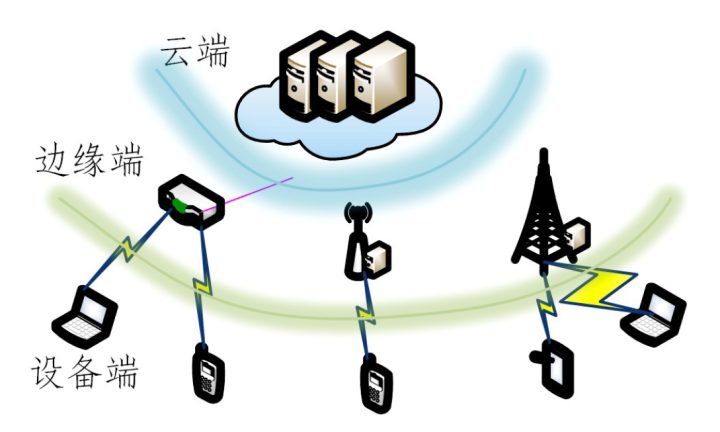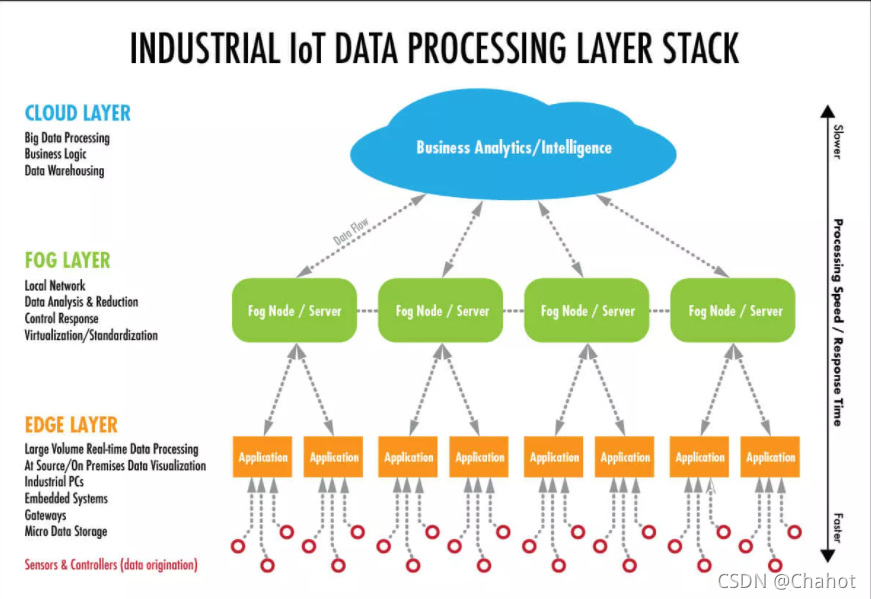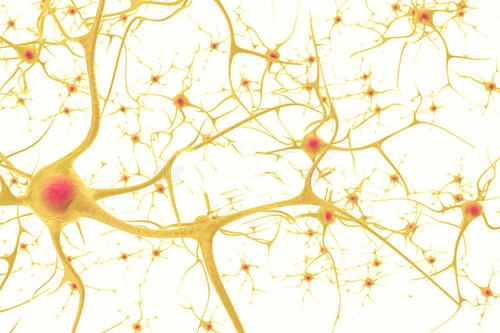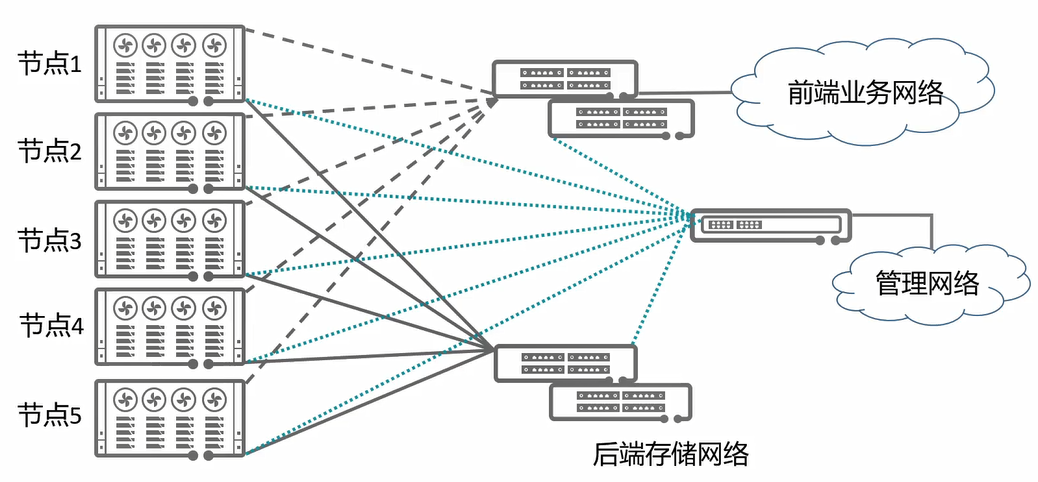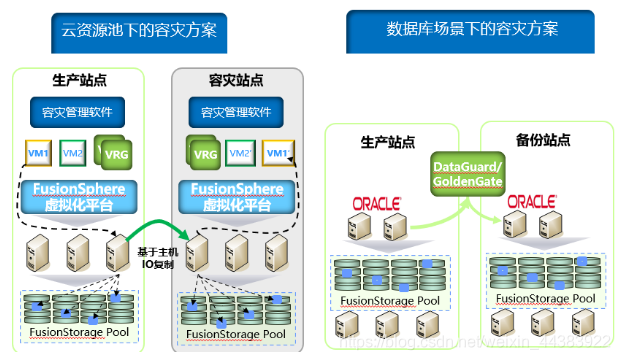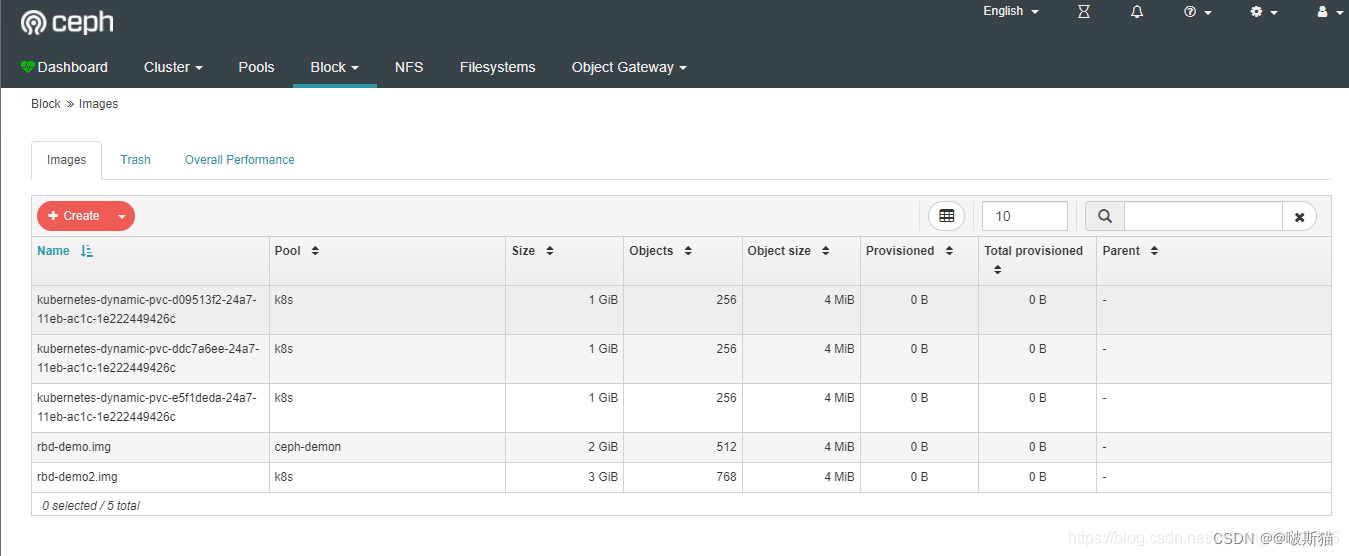前言
预感近阶段雾计算会被再次炒起,众所周知雾计算的概念是思科提出来的,于是找来思科白皮书,却是英文版,闲来无事借google翻译将PDF翻译并排版,方便更多的人认识原汁原味的雾计算。
雾计算和物联网:将云扩展到事物所在
Fog Computing and the Internet of Things: Extend
你会学到什么
物联网(IoT)正在产生前所未有的大量数据。 但是当数据进入云端进行分析时,采取行动的机会可能会消失。 本白皮书面向IT和运营技术专业人士,解释了分析和处理物联网数据的新模式。 它被称为边缘计算或雾计算:
●分析网络边缘最靠近时间的数据,并将其发送到接近其生成位置的位置,而不是将大量IoT数据发送到云。
●基于策略,以毫秒为单位对IoT数据进行操作。
●将选定的数据发送到云端以进行历史分析和长期存储。
原文:
the Cloud to Where the Things Are What You Will Learn The Internet of Things (IoT) is generating an unprecedented volume and variety of data. But by the time the data makes its way to the cloud for analysis, the opportunity to act on it might be gone. This white paper, intended for IT and operational technology professionals, explains a new model for analyzing and acting on IoT data. It is called either edge computing or Fog computing:
● Analyzes the most time-sensitive data at the network edge, close to where it is generated instead of sending vast amounts of IoT data to the cloud.
● Acts on IoT data in milliseconds, based on policy.
● Sends selected data to the cloud for historical analysis and longer-term storage.
物联网对您的业务意味着什么
物联网加速了对事件的认识和响应。在制造业,石油和天然气,公用事业,交通运输,矿业和公共部门等行业,更快的响应时间可以提高产量,提高服务水平并增加安全性。
想象一下:在工厂车间,关键机器上的温度传感器会发送与即将发生的故障相关的读数。派遣技术人员及时修理机器以避免昂贵的停机。在石油和天然气勘探中,石油管道上的传感器发生压力变化。作为回应,泵自动减速以避免灾难。在公用事业中,远程现场变电站的耐用摄像机可以检测入侵者并提醒安全人员。几乎瞬时分析揭示了其他变电站的类似事件,自动将警报提升到最高水平。
将新的事物连接到互联网也创造了新的商业机会。例子包括按需付费车辆保险,照明即服务和机器即服务(Maas)
原文:
What IoT Means to Your Business
The IoT speeds up awareness and response to events. In industries such as manufacturing, oil and gas, utilities, transportation, mining, and the public sector, faster response time can improve output, boost service levels, and increase safety.
Imagine it: On a factory floor, a temperature sensor on a critical machine sends readings associated with imminent failure. A technician is dispatched to repair the machine in time to avoid a costly shutdown. In oil and gas exploration, sensors on oil pipelines register a pressure change. In response, pumps automatically slow down to avert a disaster. In utilities, ruggedized cameras at remote field substations detect an intruder and alert security officers. Almost instantaneous analysis reveals similar events at other substations, automatically raising the alert tothe highest level.
Connecting new kinds of things to the Internet also creates new business opportunities. Examples include pay-asyou-drive vehicle insurance, lighting-as-a-service, and machine-as-a-service (Maas)
什么是物联网对您的基础设施的意义
利用物联网需要一种新的基础设施。 今天的云模型并非针对物联网所产生的数据量,品种和速度而设计的。 数十亿之前未连接的设备每天产生两个以上的艾字节数据。 估计到2020年将有500亿个“事物”连接到互联网。将所有数据从这些事物转移到云中进行分析需要大量的带宽。
原文:
What IoT Means to Your Infrastructure
Capitalizing on the IoT requires a new kind of infrastructure. Today’s cloud models are not designed for the volume, variety, and velocity of data that the IoT generates. Billions of previously unconnected devices are generating more than two exabytes of data each day. An estimated 50 billion “things” will be connected to the Internet by 2020. Moving all data from these things to the cloud for analysis would require vast amounts of bandwidth.
今天的云模型并非针对物联网所产生的数据量、种类和速度而设计的。
Today’s cloud models are not designed for the volume, variety, and velocity of data that the IoT generates.
这些数十亿的新事物也代表了无数新事物(图1)。 一些是使用工业协议而不是IP连接到控制器的机器。 在将这些信息发送到云中进行分析或存储之前,必须将其转换为IP。
原文:
These billions of new things also represent countless new types of things (Figure 1). Some are machines that connect to a controller using industrial protocols, not IP. Before this information can be sent to the cloud for analysis or storage, it must be translated to IP.
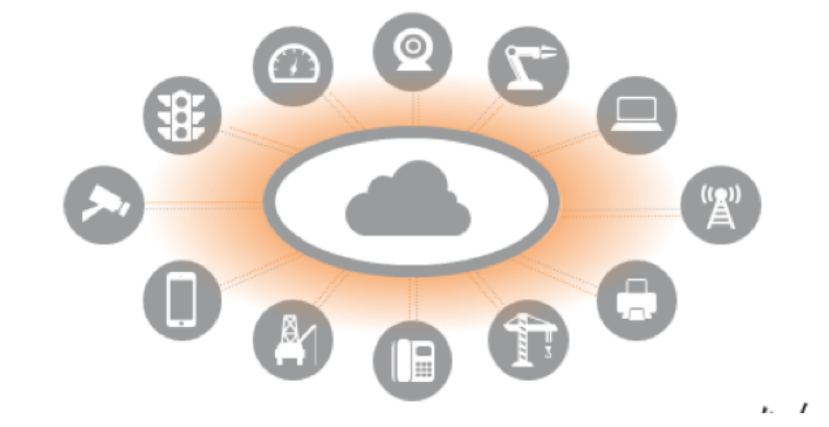
图1.将更多不同类型的东西直接连接到云是不切实际的
Figure 1. Connecting More and Different Kinds of Things Directly to the Cloud Is Impractical
面对这一挑战,物联网设备不断生成数据,而且分析必须非常迅速。 例如,当化学槽中的温度快速接近可接受的极限时,必须立即采取纠正措施。 在温度读数从边缘传播到云端进行分析需要的时间内,避免变质批次的机会可能会丢失。
处理物联网数据的数量,种类和速度需要一个新的计算模型。 主要要求是:
●尽量减少延迟:当您试图阻止生产线关闭或恢复电气服务时,毫秒就很重要。 分析收集数据的设备附近的数据可以避免灾难和级联系统故障之间的差异。
分析收集数据的设备附近的数据可以避免灾难和级联系统故障之间的差异。
Analyzing data close to the device that collected the data can make the difference between averting disaster and a cascading system failure.
●节省网络带宽:海上石油每周产生500 GB的数据。商业飞机每30分钟的飞行就会产生10TB。将大量数据从数千或数十万个边缘设备传输到云是不现实的。也不是必要的,因为许多关键分析不需要云规模处理和存储。
●解决安全问题:物联网数据需要在运输和休息时都受到保护。这需要在整个攻击过程中进行监视和自动响应:在之前,期间和之后。
●可靠运行:物联网数据越来越多地用于影响公民安全和关键基础设施的决策。基础设施和数据的完整性和可用性不容置疑。
●在具有不同环境条件的广泛地理区域收集和保护数据:物联网设备可以分布在数百平方英里以上。部署在道路,铁路,公用事业现场变电站和车辆等恶劣环境中的设备可能需要加固。在受控的室内环境中,设备并非如此。
●将数据移动到最佳处理位置:哪个地方最好取决于需要多快决定。对时间敏感的决策应该更接近产生和处理数据的事物。相比之下,历史数据的大数据分析需要云计算和存储资源。
原文:
Compounding the challenge, IoT devices generate data constantly, and often analysis must be very rapid. For example, when the temperature in a chemical vat is fast approaching the acceptable limit, corrective action must be taken almost immediately. In the time it takes for temperature readings to travel from the edge to the cloud for analysis, the opportunity to avert a spoiled batch might be lost.
Handling the volume, variety, and velocity of IoT data requires a new computing model. The main requirements are to:
● Minimize latency: Milliseconds matter when you are trying to prevent manufacturing line shutdowns or restore electrical service. Analyzing data close to the device that collected the data can make the difference between averting disaster and a cascading system failure.
● Conserve network bandwidth: Offshore oilrigs generate 500 GB of data weekly. Commercial jets generate 10 TB for every 30 minutes of flight. It is not practical to transport vast amounts of data from thousands or hundreds of thousands of edge devices to the cloud. Nor is it necessary, because many critical analyses do not require cloud-scale processing and storage.
● Address security concerns: IoT data needs to be protected both in transit and at rest. This requires monitoring and automated response across the entire attack continuum: before, during, and after.
● Operate reliably: IoT data is increasingly used for decisions affecting citizen safety and critical infrastructure. The integrity and availability of the infrastructure and data cannot be in question.
● Collect and secure data across a wide geographic area with different environmental conditions: IoT devices can be distributed over hundreds or more square miles. Devices deployed in harsh environments such as roadways, railways, utility field substations, and vehicles might need to be ruggedized. That is not the case for devices in controlled, indoor environments.
● Move data to the best place for processing: Which place is best depends partly on how quickly a decision is needed. Extremely time-sensitive decisions should be made closer to the things producing and acting on the data. In contrast, big data analytics on historical data needs the computing and storage resources of the cloud.
传统的云计算架构不能满足所有这些要求。 流行的方法 - 将所有数据从网络边缘移动到数据中心进行处理 - 增加了延迟。 来自数千台设备的流量很快就会超过带宽容量。 行业法规和隐私问题禁止对某些类型的数据进行异地存储。 另外,云服务器仅与IP通信,而不是IoT设备使用的无数其他协议。 分析大多数物联网数据的理想场所靠近产生并处理该数据的设备。 我们称之为雾计算。
原文:
Traditional cloud computing architectures do not meet all of these requirements. The prevailing approach—moving all data from the network edge to the data center for processing—adds latency. Traffic from thousands of devices soon outstrips bandwidth capacity. Industry regulations and privacy concerns prohibit offsite storage of certain types of data. In addition, cloud servers communicate only with IP, not the countless other protocols used by IoT devices. The ideal place to analyze most IoT data is near the devices that produce and act on that data. We call it Fog computing.
雾计算101
Fog Computing 101
它是什么?
雾扩大了云,以接近物联网数据产生和行动的事物(图2)。这些被称为雾节点的设备可以通过网络连接部署在任何地方:工厂车间,电力杆顶部,铁路轨道,车辆或石油钻井平台上。任何具有计算,存储和网络连接的设备都可以成为雾节点。例子包括工业控制器,交换机,路由器,嵌入式服务器和视频监控摄像机。
IDC估计,物理接近物联网的设备上分析的数据量接近40%.1有充分的理由:分析接近收集位置的物联网数据可最大限度地减少延迟。它将千兆字节的网络流量从核心网络,并将敏感数据保存在网络中。
分析接近收集位置的物联网数据可最大限度地减少延迟。它从核心网络中卸载千兆字节的网络流量。它保持网络中的敏感数据。

图2.雾将Cloud Closer扩展到生产数据的设备
Figure 2. The Fog Extends the Cloud Closer to the Devices Producing Data
原文:
What Is It?
The fog extends the cloud to be closer to the things that produce and act on IoT data (Figure 2). These devices, called fog nodes, can be deployed anywhere with a network connection: on a factory floor, on top of a power pole, alongside a railway track, in a vehicle, or on an oil rig. Any device with computing, storage, and network connectivity can be a fog node. Examples include industrial controllers, switches, routers, embedded servers, and video surveillance cameras.
IDC estimates that the amount of data analyzed on devices that are physically close to the Internet of Things is approaching 40 percent.1 There is good reason: analyzing IoT data close to where it is collected minimizes latency.It offloads gigabytes of network traffic from the core network, and it keeps sensitive data inside the network.
Analyzing IoT data close to where it is collected minimizes latency. It offloads gigabytes of network traffic from thecore network. And it keeps sensitive data inside the network.
雾应用的例子
雾应用程序和物联网本身一样多样化。 他们的共同点是监控或分析来自网络连接事件的实时数据,然后启动一项操作。 该行动可能涉及机器对机器(M2M)通信或人机交互(HMI)。 例如锁门,改变设备设置,在火车上使用制动器,缩放摄像机,响应压力读数打开阀门,创建条形图或发送警报给技术人员进行预防性维修。 可能性是无限的。
生产雾应用在制造业,石油和天然气,公用事业,交通运输,采矿业和公共部门迅速扩散。
原文:
Examples of Fog Applications
Fog applications are as diverse as the Internet of Things itself. What they have in common is monitoring or analyzing real-time data from network-connected things and then initiating an action. The action can involve machine-to-machine (M2M) communications or human-machine interaction (HMI). Examples include locking a door, changing equipment settings, applying the brakes on a train, zooming a video camera, opening a valve in response to a pressure reading, creating a bar chart, or sending an alert to a technician to make a preventive repair. The possibilities are unlimited.
Production fog applications are rapidly proliferating in manufacturing, oil and gas, utilities, transportation, mining,and the public sector.
何时考虑雾计算
●在极端边缘收集数据:车辆,轮船,工厂车间,道路,铁路等
●在一个大的地理区域内,成千上万的事物正在生成数据。
●有必要在不到一秒的时间内分析和处理数据。
When to Consider Fog Computing
● Data is collected at the extreme edge: vehicles, ships, factory floors, roadways, railways, etc.
● Thousands or millions of things across a large geographic area are generating data.
● It is necessary to analyze and act on the data in less than a second.
雾是如何工作的?
开发人员在网络边缘端口或写入雾状节点的IoT应用程序。距离网络边缘最近的雾节点从物联网设备获取数据。然后 - 这是至关重要的 - 迷雾物联网应用程序将不同类型的数据指向最佳分析位置,如表1所示:
●最接近生成数据的雾节点上分析对时间最敏感的数据。例如,在思科智能电网分销网络中,对时间要求最高的要求是验证保护和控制回路是否正常运行。因此,离网格传感器最近的雾节点可以查找问题迹象,然后通过向执行器发送控制命令来阻止它们。
●可等待数秒或数分钟以便执行操作的数据将传递到聚合节点进行分析和操作。在智能电网示例中,每个变电站可能有自己的汇总节点,报告每个下游馈线和横向的运行状态。
●对时间不敏感的数据会发送到云中进行历史分析,大数据分析和长期存储(请参阅侧栏)。例如,成千上万或数十万个雾节点中的每一个都可能将定期的网格数据摘要发送到云端以进行历史分析和存储。

表1.雾节点将云扩展到网络边缘
Table 1. Fog Nodes Extend the Cloud to the Network Edge
原文
How Does Fog Work?
Developers either port or write IoT applications for fog nodes at the network edge. The fog nodes closest to the network edge ingest the data from IoT devices. Then—and this is crucial—the fog IoT application directs different types of data to the optimal place for analysis, as shown in Table 1:
● The most time-sensitive data is analyzed on the fog node closest to the things generating the data. In a Cisco Smart Grid distribution network, for example, the most time-sensitive requirement is to verify that protection and control loops are operating properly. Therefore, the fog nodes closest to the grid sensors can look for signs of problems and then prevent them by sending control commands to actuators.
● Data that can wait seconds or minutes for action is passed along to an aggregation node for analysis and action. In the Smart Grid example, each substation might have its own aggregation node that reports the operational status of each downstream feeder and lateral.
● Data that is less time sensitive is sent to the cloud for historical analysis, big data analytics, and long-term storage (see sidebar). For example, each of thousands or hundreds of thousands of fog nodes might send periodic summaries of grid data to the cloud for historical analysis and storage.
雾和云发生了什么
雾节点:
●使用任何协议实时接收来自物联网设备的提要
●运行支持IoT的应用程序以进行实时控制和分析,并提供毫秒响应时间
●提供瞬时存储,通常为1-2小时
●定期向云发送数据摘要
云平台:
●接收和汇总来自许多雾节点的数据摘要
●对来自其他来源的物联网数据和数据进行分析,以获得业务洞察力
●可以根据这些见解将新应用程序规则发送到雾节点
原文:
What Happens in the Fog and the Cloud
Fog nodes:
● Receive feeds from IoT devices using any protocol, in real time
● Run IoT-enabled applications for real-time control and analytics, with millisecond response time
● Provide transient storage, often 1–2 hours
● Send periodic data summaries to the cloud
The cloud platform:
● Receives and aggregates data summaries from many fog nodes
● Performs analysis on the IoT data and data from other sources to gain business insight
● Can send new application rules to the fog nodes based on these insights
雾计算的好处
将云扩展到更接近产生和采取数据行为的事物可以通过以下方式使业务受益:
●更高的业务灵活性:使用合适的工具,开发人员可以快速开发雾应用并在需要时进行部署。 机器制造商可以向客户提供MaaS。 雾应用程序将机器编程为按照每个客户的需求进行操作。
●更好的安全性:使用您在IT环境的其他部分使用的相同策略,控件和过程来保护雾气节点。 使用相同的物理安全和网络安全解决方案。
●更深入的洞察力和隐私控制:在本地分析敏感数据,而不是将其发送到云进行分析。 您的IT团队可以监视和控制收集,分析和存储数据的设备。
●降低运营成本:通过在本地处理选定的数据来节省网络带宽,而不是将其发送到云进行分析。
原文:
Benefits of Fog Computing
Extending the cloud closer to the things that generate and act on data benefits the business in the following ways:
● Greater business agility: With the right tools, developers can quickly develop fog applications and deploy them where needed. Machine manufacturers can offer MaaS to their customers. Fog applications program the machine to operate in the way each customer needs.
● Better security: Protect your fog nodes using the same policy, controls, and procedures you use in other parts of your IT environment. Use the same physical security and cybersecurity solutions.
● Deeper insights, with privacy control: Analyze sensitive data locally instead of sending it to the cloud for analysis. Your IT team can monitor and control the devices that collect, analyze, and store data.
● Lower operating expense: Conserve network bandwidth by processing selected data locally instead of sending it to the cloud for analysis.
结论
雾计算为云计算提供了一个处理每天从物联网生成的两百亿字节数据的伴侣。 处理数据更靠近生产和需要的地方解决了爆炸性数据量,品种和速度的挑战。
雾计算通过消除用于分析的云的往返行程来加速对事件的认识和响应。 它避免了通过从核心网络卸载千兆字节的网络流量而增加昂贵的带宽需求。 它还通过在公司内部分析它来保护敏感的物联网数据。 最终,采用雾计算的组织可以获得更深入更快的洞察力,从而提高业务敏捷性,提高服务水平并提高安全性。
原文:
Conclusion
Fog computing gives the cloud a companion to handle the two exabytes of data generated daily from the Internet of Things. Processing data closer to where it is produced and needed solves the challenges of exploding data volume, variety, and velocity.
Fog computing accelerates awareness and response to events by eliminating a round trip to the cloud for analysis. It avoids the need for costly bandwidth additions by offloading gigabytes of network traffic from the core network. It also protects sensitive IoT data by analyzing it inside company walls. Ultimately, organizations that adopt fog computing gain deeper and faster insights, leading to increased business agility,higher service levels, and improved safety.
了解更多信息
雾计算今天在这里,作为思科物联网系统的一部分。 它可以使您的业务更灵活,响应更快,更具创新性。
要了解更多信息,请访问。
原文:
For More Information
Fog computing is here today, as part of the Cisco IoT system. It can make your business more agile, faster to respond, and more innovative.
To learn more, visit.
![[Spark基础]--雾计算](https://pic4.zhimg.com/80/v2-c5663cc3b0480382af3864de35b482c9_hd.jpg)
